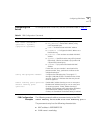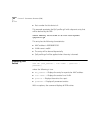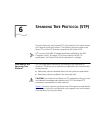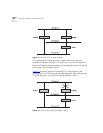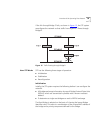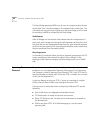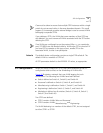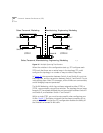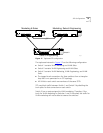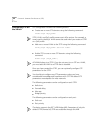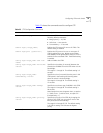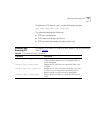
STP Configurations
91
Care must be taken to ensure that multiple STPD instances within a single
switch do not see each other in the same broadcast domain. This could
happen if, for example, another external bridge is used to connect VLANs
belonging to separate STPDs.
If you delete an STPD, the VLANs that were members of that STPD are
also deleted. You must remove all VLANs associated with the STP before
deleting the STPD.
If no VLANs are configured to use the protocol filter
any
on a particular
port, STP BPDUs are not flooded within a VLAN when STP is turned off. If
you need STP to operate on this type of port, enable STP on the
associated VLAN, so that it can participate.
Defaults
The default device configuration contains a single STPD called
s0
. The
default VLAN is a member of STPD s0.
All STP parameters default to the IEEE 802.1D values, as appropriate.
STP Configurations
When you assign VLANs to an STPD, pay careful attention to the STP
configuration and its effect on the forwarding of VLAN traffic.
Figure 16
illustrates a network that uses VLAN tagging for trunk
connections. The following four VLANs have been defined:
■
Sales
is defined on Switch A, Switch B, and Switch M.
■
Personnel
is defined on Switch A, Switch B, and Switch M.
■
Manufacturing
is defined on Switch Y, Switch Z, and Switch M.
■
Engineering
is defined on Switch Y, Switch Z, and Switch M.
■
Marketing
is defined on all switches (Switch A, Switch B, Switch Y,
Switch Z, and Switch M).
Two STPDs are defined:
■
STPD1 contains VLANs
Sales
and
Personnel.
■
STPD2 contains VLANs
Manufacturing
and
Engineering.
The VLAN
Marketing
is a member of the default STPD, but not assigned
to either STPD1 or STPD2.



